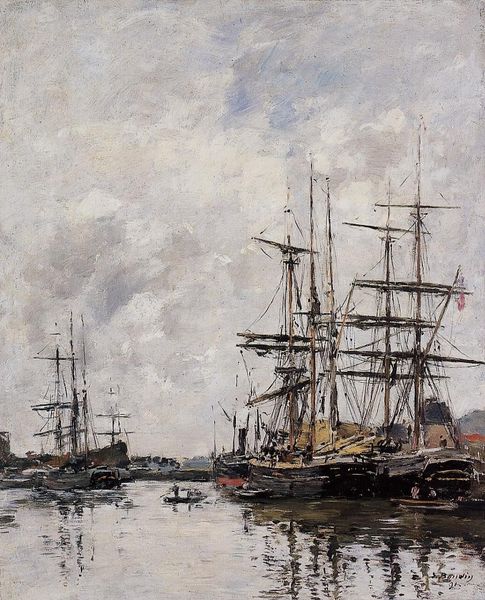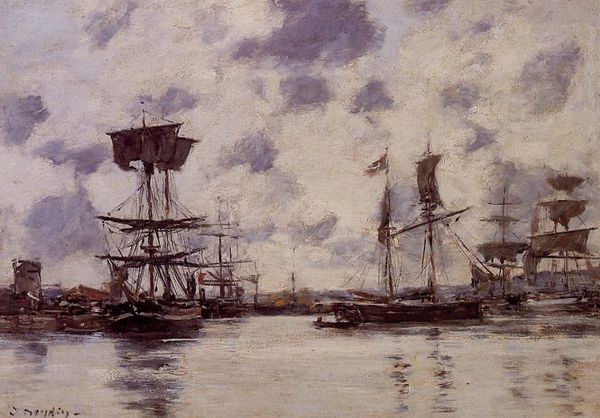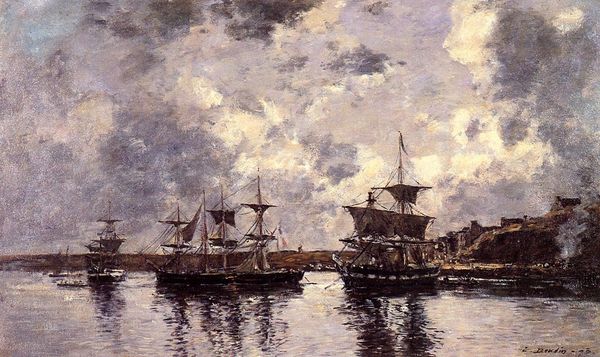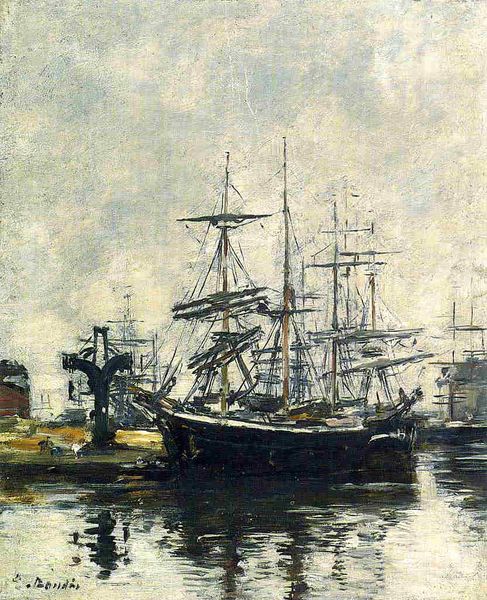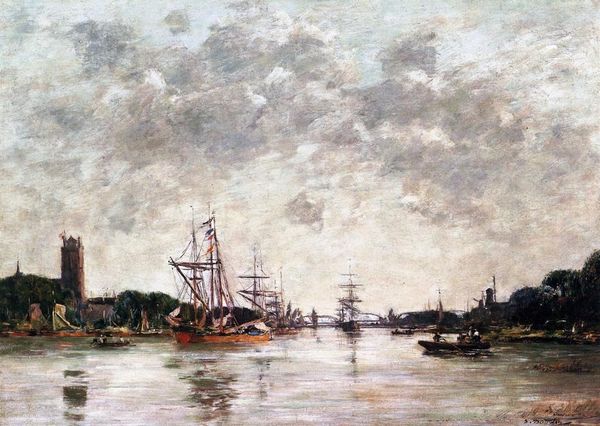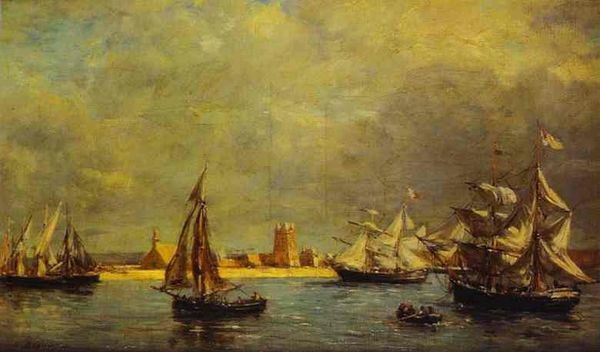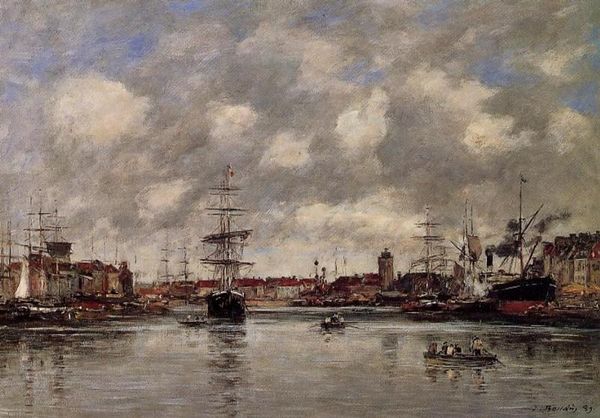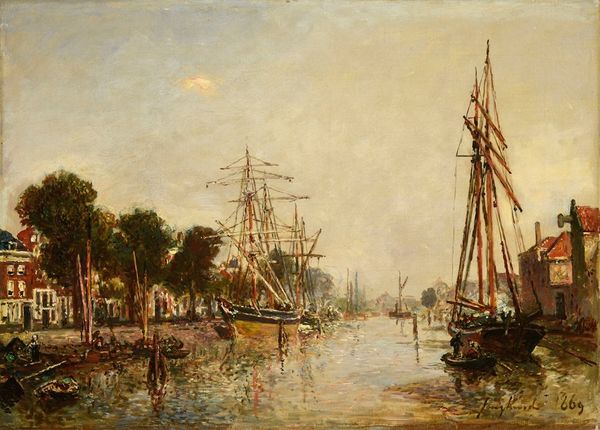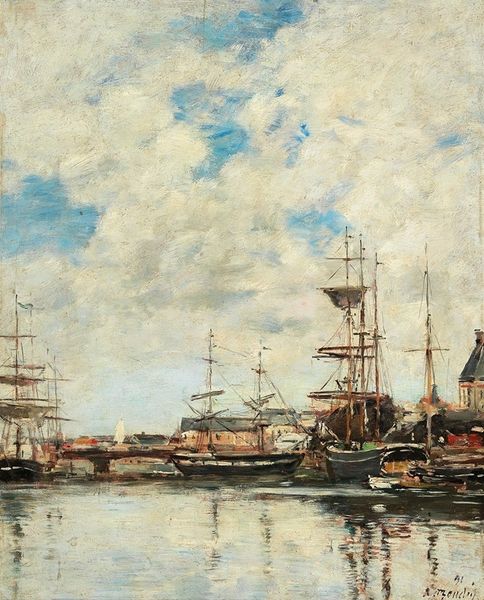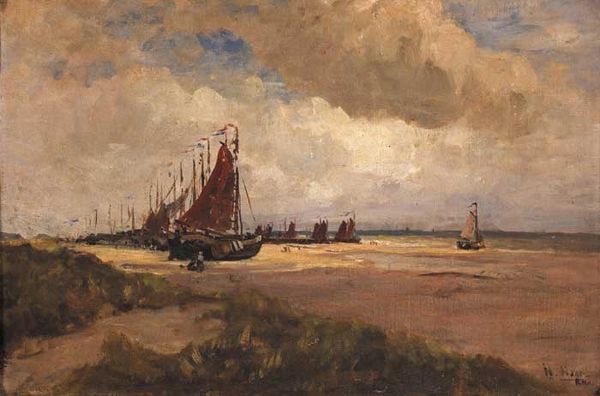
painting, plein-air, oil-paint
#
boat
#
ship
#
painting
#
impressionism
#
plein-air
#
oil-paint
#
landscape
#
impressionist landscape
#
oil painting
#
water
#
line
#
cityscape
Copyright: Public domain
Curator: Ah, yes, this evocative canvas is entitled “The Harbour at Honfleur,” painted by Charles-François Daubigny. Editor: It feels overcast, like a muted memory of a bustling port. The lack of bright color makes it somber. Curator: Daubigny, often working en plein air, focused here on the interplay of light and atmosphere characteristic of what would become known as Impressionism. This aesthetic deeply connects to the rise of bourgeois leisure and the new social importance of landscapes. Editor: I see a pre-impressionist concern for rendering light, sure, but the composition seems more tied to traditional, even romantic, depictions of harbor scenes. The dominating presence of the large ship is clearly an indicator of European commerce, while there is still very little labor depicted. Curator: Absolutely. The absence of overtly visible labour and perhaps his deliberate focus on leisure within these maritime scenes can be read, even if subconsciously, as an affirmation of certain class structures. Who is granted access to these scenes of quiet industry? The painting feels complicit in preserving such boundaries. Editor: Yes, though I see his attempt to break from rigid academic painting, his own privileged position undoubtedly informs what aspects of life in the harbor are deemed worthy of depiction. Even his looser brushwork doesn't escape the constraints of the day. Curator: Well, his looser brushstrokes and his movement between representation and more abstract painting were rather subversive at that time. Remember how unconventional his seascapes from a boat were for the Salon audiences? The shift towards landscape as a space of encounter is something new… Editor: All of that work exists within specific economic conditions, even today. And thinking about this through Daubigny's painting forces us to confront our contemporary gaze as viewers—how does our consumption of art reflect broader inequalities that persist even now? Curator: Precisely. Daubigny's work presents a seemingly simple landscape; its deceptive charm requires a thorough consideration of history and contemporary critique. Editor: It’s a reminder that art isn’t just something pretty to look at, it demands that we be better critical thinkers.
Comments
No comments
Be the first to comment and join the conversation on the ultimate creative platform.


